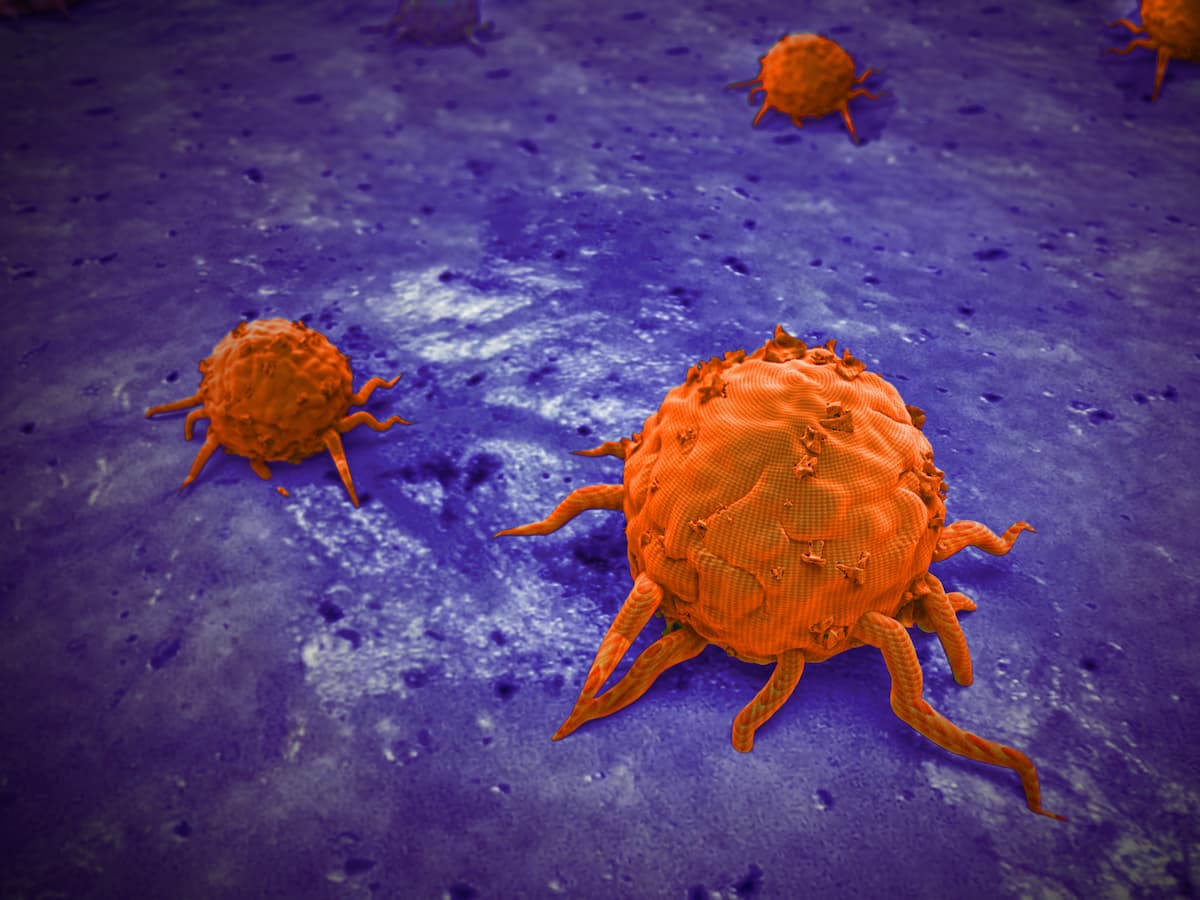Apalutamide/AAP Improves Outcomes Without Negative HRQOL Impact in Prostate Cancer
Six months of intensified androgen deprivation therapy plus next-generation anti-androgens may be an attractive option for those with prostate cancer and rising prostate specific antigen levels following prostatectomy.
FORMULA-509 is a randomized, phase 2 study evaluating the safety and effectiveness of 2 newer anti-hormonal drugs, abiraterone acetate and apalutamide with luteinizing hormone-releasing hormone agonist, a standard form of ADT.

Oncological outcomes improved without a detrimental effect on health-related quality of life (HRQOL) among patients with prostate cancer when combining abiraterone acetate (Zytiga) with prednisone (AAP) and apalutamide (Erleada) compared with bicalutamide, according to findings from the phase 2 FORMULA-509 trial (NCT03141671) presented during the 2024 Genitourinary Cancers Symposium.
Researchers provided validated questionnaires to patients at baseline, at the end of treatment, and 1 year after completing treatment. Questionnaires completed by patients included The Expanded Prostate Cancer Index Composite (EPIC-26), PROMIS Fatigue, and Saint Louis University Mental Status Exam (SLUMS), measuring hormone function, fatigue, and cognitive impairment.
EPIC-26 was measured based on a score from 0 to 100, with 100 as the highest function possible. PROMIS Fatigue was measured using a standardized T score, with higher scores indicating greater fatigue. SLUMS was measured based on a score from 0 to 30: 27 to 30 indicated normal scores, 21 to 26 meant mild neurocognitive disorder, and 20 or less meant a patient had dementia. A t-test was used to compare scores among each treatment arm. Furthermore, established thresholds for clinically meaningful differences were used to interpret the results (4 to 6 for EPIC-26 hormonal domain and 5 to 10 for PROMIS Fatigue).
“It is critical that we understand the impact of this more intensified ADT regimen and patient-reported health-related quality of life, as patient experience and perception can differ from physician assessment,” lead study author Karen Hoffman, MD, MHSc, MPH, FASTRO, of The University of Texas MD Anderson Cancer Center, said during the presentation.
“In the FORMULA-509 trial, health-related quality of life was assessed with validated questionnaires that were administered at baseline, at the end of treatment, and one year after completion of treatment,” she said.
Patients (n=345) were randomized 1:1 to bicalutamide (n=172) and AAP/apalutamide (n=173) and were evaluated using the 3 types of questionnaires. For EPIC-26, the completion rates were 96%, 80%, and 70% at baseline, end of treatment, and 1 year after completing treatment, respectively. The completion rates for PROMIS Fatigue were 95%, 79%, and 67%; and 96%, 80%, and 70% for SLUMS.
Hormonal Function Domain
Both arms—from baseline to end of treatment—demonstrated meaningful improvements, specifically with declines in the EPIC-26 hormonal domain (median change -15 bicalutamide; -15 AAP/apalutamide) and an increase in PROMIS Fatigue (median change 6 bicalutamide; 7.4 AAP/apalutamide).
Patient-reported HRQoL from the end of treatment to 1 year after treatment improved to near baseline for EPIC-26 hormonal function. For EPIC-26 hormonal function, the median scores for the bicalutamide arm were 95 at baseline (range 35.0-100.0), 75 at the end of treatment (range 25.0-100.0), and 90 at 1-year follow-up (range 40.0-100.0).
In the AAP/apalutamide arm, the median hormonal ranges were 95.0 (range 50.0-100.0), 75.0 (range 25.0-100.0), and 90 (range 30.0-100.0) for baseline, end of treatment, and 1-year follow-up, respectively. P-values were 0.46 at baseline, 0.40 at the end of treatment, and 0.75 at 1-year follow-up, indicating no significant difference.
“With subsequent improvement towards baseline at one year, there was no difference in patient-reported hormonal function between the treatment arms at end of treatment, and one year after completion of treatment,” said Hoffman.
Fatigue
Similar to hormonal function, there was no difference in patient-reported fatigue, Hoffman said.
Median scores for PROMIS Fatigue in the bicalutamide arm were 43.1 at baseline (range 33.7-75.8), 48.6 at the end of treatment (range 33.7-75.8), and 46.0 at 1-year follow-up (range 33.7-75.8). In the AAP/apalutamide arm, the median scores were 43.1 at baseline (range 33.7-69.0), 51.0 at the end of treatment (range 33.7-75.8), and 46.0 at 1-year follow-up (range 33.7-75.8). P-values were 0.78 at baseline, 0.18 at the end of treatment, and 0.95 at 1-year follow-up.
Cognitive Impairment
The median scores for SLUMS were 27 in both the bicalutamide (range 16.0-30.0) and AAP/apalutamide (range 17.0-30.0) arms, 28 for both arms at the end of treatment (range 13.0-30.0; 17.0-30.0, respectively), and 27 in both arms at 1-year follow-up (range 14.0-30.0; 21.0-30.0). P-values were 0.22 at baseline, 0.41 at the end of treatment, and 0.76 at 1-year follow-up.
“Given these favorable patient-reported health-related quality of life outcomes, 6 months of intensified ADT with next-generation anti-androgens is an attractive treatment alternative to long-duration ADT for patients with rising PSA and unfavorable features after prostatectomy,” Hoffman concluded.
About FORMULA-509
FORMULA-509 is a randomized, phase 2 study evaluating the safety and effectiveness of 2 newer anti-hormonal drugs, abiraterone acetate and apalutamide with luteinizing hormone-releasing hormone agonist, a standard form of ADT.
All patients in the study had histologically confirmed prostate cancer, had a PSA ≥ 0.1 after receiving radical prostatectomy, and had at least 1 unfavorable risk factor, including—but not limited to—a Gleason score between 8 and 10, a PSA > 0.5, pathologically positive lymph nodes, negative margins, and/or local or regional recurrence on imaging.
The trial included two experimental arms: GnRH plus bicalutamide and GnRH plus abiraterone with apalutamide and prednisone.
Reference
Hoffman K, Nguyen P, Rathkopf D, et al. Patient-reported health-related quality of life (HRQoL) in the randomized FORMULA-509 trial of salvage radiotherapy and the 6 months of GnRH agonist with either bicalutamide or abiraterone acetate plus prednisone (AAP) and apalutamide (Apa) after radical prostatectomy (RP). J Clin Oncol. 2024; 42(4): 260. doi: 10.1200/JCO.2024.42.4_suppl.260
Newsletter
Stay up to date on recent advances in the multidisciplinary approach to cancer.
Navigating Treatment Intensification in Metastatic Hormone-Sensitive Prostate Cancer
A patient case of a 50-year-old man with hormone-sensitive prostate cancer sparked a debate among oncologists regarding the best course of action.